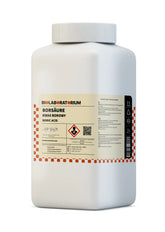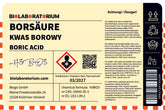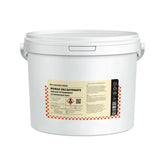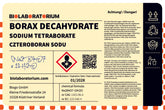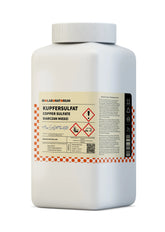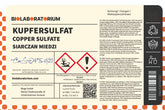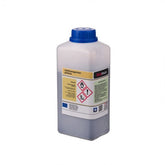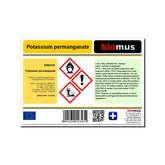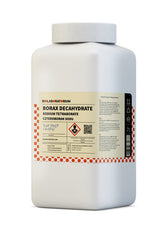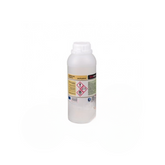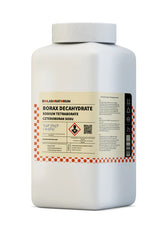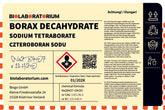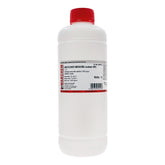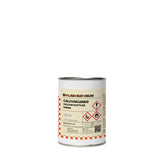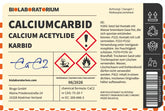Barium nitrate under the microscope: meaning, risks, and safety precautions
Barium nitrate, also known as Ba(NO₃)₂, is a chemical compound used in a variety of industrial processes and products. As a salt of nitric acid and barium, barium nitrate has a number of fascinating properties that make it an important component of many applications. In this blog article, we will take a closer look at barium nitrate – from its properties and uses to the safety aspects of handling it.
The properties of barium nitrate
Barium nitrate is a crystalline, white powder that is soluble in water. It has a high density of 3.24 g/cm³ and a melting point of 590 °C. Due to its chemical structure, barium nitrate is a strong oxidizing agent that can easily react with combustible materials.
One of the most striking properties of barium nitrate is its ability to emit a greenish light when heated. This effect is used in pyrotechnics, fireworks, and signal flares to create colored flames. Additionally, barium nitrate is used in the glass and ceramics industry, in drilling muds, and as an oxidizing agent in chemical syntheses.
Applications of Barium Nitrate
The versatile properties of barium nitrate make it an important component in a variety of industrial processes and products:
Pyrotechnics and Fireworks
As already mentioned, barium nitrate is frequently used in pyrotechnics and fireworks due to its ability to emit green light. It acts as an oxidizer and gives the flames a characteristic green color.
Glass and ceramics industry
In the glass and ceramics industry, barium nitrate is used as an additive to improve the melting properties and chemical resistance of the final products. It can also be used as an opacifying agent.
Drilling Muds
Barium nitrate is used in drilling muds employed in oil and gas drilling. It serves to increase the density of the drilling mud and thus ensure the stability of the borehole.
Chemical syntheses
As a strong oxidizing agent, barium nitrate is used in chemical syntheses to oxidize organic compounds or act as a reactant in redox reactions.
Further Applications
Furthermore, barium nitrate is used in the production of phosphors, catalysts, ceramics, glasses, and enamel dyes.
Safety in Handling Barium Nitrate
Although barium nitrate is versatile, caution must be exercised when handling this chemical. Barium nitrate is a strong oxidizer and can cause fire or explosions upon contact with flammable materials. Additionally, it is toxic if inhaled, swallowed, or absorbed through the skin.
For this reason, some safety measures must be observed when handling barium nitrate:
Storage and Handling
Barium nitrate should be stored in a cool, dry, and well-ventilated place, separate from flammable materials. When handling the substance, appropriate protective equipment such as gloves, safety goggles, and respiratory masks must be worn.
Disposal
Barium nitrate-containing waste must be disposed of properly as it is hazardous waste. Improper disposal can lead to environmental damage.
First Aid
In case of exposure or poisoning, first aid measures must be taken immediately and medical help sought. This includes rinsing eyes and skin as well as administering activated charcoal if ingested.
Conclusion
Barium nitrate is a fascinating chemical compound with a wide range of applications. From use in pyrotechnics to industrial processes - barium nitrate is an important component in numerous products and procedures. However, handling this substance requires special safety measures due to its oxidizing power and toxicity. Only through responsible and proper handling can the risks be minimized and the benefits of barium nitrate be optimally utilized.

